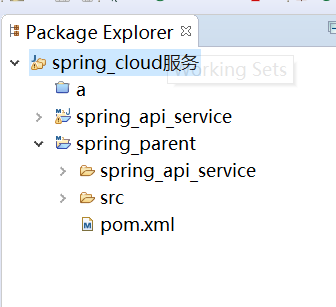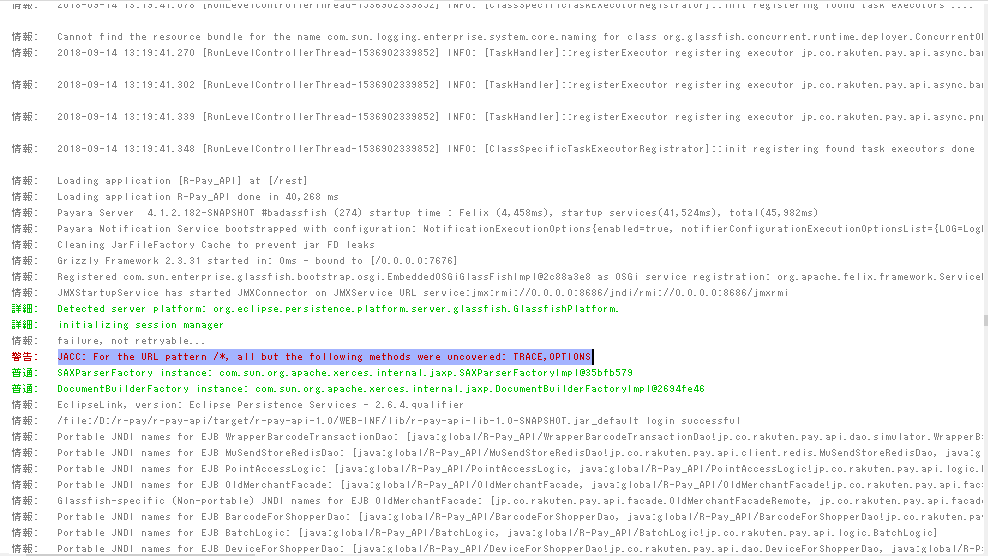可以将文章内容翻译成中文,广告屏蔽插件可能会导致该功能失效(如失效,请关闭广告屏蔽插件后再试):
问题:
Check out this code :
<a href=\"#\" id=\"link\">Link</a>
<span>Moving</span>
$(\'#link\').click(function () {
console.log(\"Enter\");
$(\'#link\').animate({ width: 200 }, 2000, function() {
console.log(\"finished\");
});
console.log(\"Exit\");
});
As you can see in the console, the \"animate\" function is asynchronous, and it \"fork\"s the flow of the event handler block code. In fact :
$(\'#link\').click(function () {
console.log(\"Enter\");
asyncFunct();
console.log(\"Exit\");
});
function asyncFunct() {
console.log(\"finished\");
}
follow the flow of the block code!
If I wish to create my function asyncFunct() { } with this behaviour, how can I do it with javascript/jquery? I think there is a strategy without the use of setTimeout()
回答1:
You cannot make a truly custom asynchronous function. You\'ll eventually have to leverage on a technology provided natively, such as:
setIntervalsetTimeoutrequestAnimationFrameXMLHttpRequestWebSocketWorker- Some HTML5 APIs such as the File API, Web Database API
- Technologies that support
onload
- ... many others
In fact, for the animation jQuery uses setInterval.
回答2:
You can use a timer:
setTimeout( yourFn, 0 );
(where yourFn is a reference to your function)
or, with Lodash:
_.defer( yourFn );
Defers invoking the func until the current call stack has cleared. Any additional arguments are provided to func when it\'s invoked.
回答3:
here you have simple solution (other write about it)
http://www.benlesh.com/2012/05/calling-javascript-function.html
And here you have above ready solution:
function async(your_function, callback) {
setTimeout(function() {
your_function();
if (callback) {callback();}
}, 0);
}
TEST 1 (may output \'1 x 2 3\' or \'1 2 x 3\' or \'1 2 3 x\'):
console.log(1);
async(function() {console.log(\'x\')}, null);
console.log(2);
console.log(3);
TEST 2 (will always output \'x 1\'):
async(function() {console.log(\'x\');}, function() {console.log(1);});
This function is executed with timeout 0 - it will simulate asynchronous task
回答4:
Here is a function that takes in another function and outputs a version that runs async.
var async = function (func) {
return function () {
var args = arguments;
setTimeout(function () {
func.apply(this, args);
}, 0);
};
};
It is used as a simple way to make an async function:
var anyncFunction = async(function (callback) {
doSomething();
callback();
});
This is different from @fider\'s answer because the function itself has its own structure (no callback added on, it\'s already in the function) and also because it creates a new function that can be used.
回答5:
This page walks you through the basics of creating an async javascript function.
Performing asynchronous function calls in JavaScript using arguments
normally involves constructing the expression argument to setTimeout
or setInterval manually.
If that doesn\'t solve it for you, check out the documentation on the animate function.
回答6:
Edit: I totally misunderstood the question. In the browser, I would use setTimeout. If it was important that it ran in another thread, I would use Web Workers.
回答7:
If you want to use Parameters and regulate the maximum number of async functions you can use a simple async worker I\'ve build:
var BackgroundWorker = function(maxTasks) {
this.maxTasks = maxTasks || 100;
this.runningTasks = 0;
this.taskQueue = [];
};
/* runs an async task */
BackgroundWorker.prototype.runTask = function(task, delay, params) {
var self = this;
if(self.runningTasks >= self.maxTasks) {
self.taskQueue.push({ task: task, delay: delay, params: params});
} else {
self.runningTasks += 1;
var runnable = function(params) {
try {
task(params);
} catch(err) {
console.log(err);
}
self.taskCompleted();
}
// this approach uses current standards:
setTimeout(runnable, delay, params);
}
}
BackgroundWorker.prototype.taskCompleted = function() {
this.runningTasks -= 1;
// are any tasks waiting in queue?
if(this.taskQueue.length > 0) {
// it seems so! let\'s run it x)
var taskInfo = this.taskQueue.splice(0, 1)[0];
this.runTask(taskInfo.task, taskInfo.delay, taskInfo.params);
}
}
You can use it like this:
var myFunction = function() {
...
}
var myFunctionB = function() {
...
}
var myParams = { name: \"John\" };
var bgworker = new BackgroundWorker();
bgworker.runTask(myFunction, 0, myParams);
bgworker.runTask(myFunctionB, 0, null);
回答8:
Late, but to show an easy solution using promises after their introduction in ES6, it handles asynchronous calls a lot easier:
You set the asynchronous code in a new promise:
var asyncFunct = new Promise(function(resolve, reject) {
$(\'#link\').animate({ width: 200 }, 2000, function() {
console.log(\"finished\");
resolve();
});
});
Note to set resolve() when async call finishes.
Then you add the code that you want to run after async call finishes inside .then() of the promise:
asyncFunct.then((result) => {
console.log(\"Exit\");
});
Here is a snippet of it:
$(\'#link\').click(function () {
console.log(\"Enter\");
var asyncFunct = new Promise(function(resolve, reject) {
$(\'#link\').animate({ width: 200 }, 2000, function() {
console.log(\"finished\");
resolve();
});
});
asyncFunct.then((result) => {
console.log(\"Exit\");
});
});
<script src=\"https://ajax.googleapis.com/ajax/libs/jquery/2.1.1/jquery.min.js\"></script>
<a href=\"#\" id=\"link\">Link</a>
<span>Moving</span>
or JSFiddle
回答9:
Function.prototype.applyAsync = function(params, cb){
var function_context = this;
setTimeout(function(){
var val = function_context.apply(undefined, params);
if(cb) cb(val);
}, 0);
}
// usage
var double = function(n){return 2*n;};
var display = function(){console.log(arguments); return undefined;};
double.applyAsync([3], display);
Although not fundamentally different than the other solutions, I think my solution does a few additional nice things:
- it allows for parameters to the functions
- it passes the output of the function to the callback
- it is added to
Function.prototype allowing a nicer way to call it
Also, the similarity to the built-in function Function.prototype.apply seems appropriate to me.
回答10:
Next to the great answer by @pimvdb, and just in case you where wondering, async.js does not offer truly asynchronous functions either. Here is a (very) stripped down version of the library\'s main method:
function asyncify(func) { // signature: func(array)
return function (array, callback) {
var result;
try {
result = func.apply(this, array);
} catch (e) {
return callback(e);
}
/* code ommited in case func returns a promise */
callback(null, result);
};
}
So the function protects from errors and gracefully hands it to the callback to handle, but the code is as synchronous as any other JS function.
回答11:
Unfortunately, JavaScript doesn\'t provide an async functionality. It works only in a single one thread. But the most of the modern browsers provide Workers, that are second scripts which gets executed in background and can return a result.
So, I reached a solution I think it\'s useful to asynchronously run a function, which creates a worker for each async call.
The code below contains the function async to call in background.
Function.prototype.async = function(callback) {
let blob = new Blob([ \"self.addEventListener(\'message\', function(e) { self.postMessage({ result: (\" + this + \").apply(null, e.data) }); }, false);\" ], { type: \"text/javascript\" });
let worker = new Worker(window.URL.createObjectURL(blob));
worker.addEventListener(\"message\", function(e) {
this(e.data.result);
}.bind(callback), false);
return function() {
this.postMessage(Array.from(arguments));
}.bind(worker);
};
This is an example for usage:
(function(x) {
for (let i = 0; i < 999999999; i++) {}
return x * 2;
}).async(function(result) {
alert(result);
})(10);
This executes a function which iterate a for with a huge number to take time as demonstration of asynchronicity, and then gets the double of the passed number.
The async method provides a function which calls the wanted function in background, and in that which is provided as parameter of async callbacks the return in its unique parameter.
So in the callback function I alert the result.
回答12:
MDN has a good example on the use of setTimeout preserving \"this\".
Like the following:
function doSomething() {
// use \'this\' to handle the selected element here
}
$(\".someSelector\").each(function() {
setTimeout(doSomething.bind(this), 0);
});



